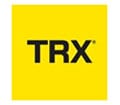Some people thrive on the excitement of competition. Others are driven by improving personal results. And many simply enjoy the energy and connection that comes with exercising with others.
No matter your exercise type, understanding your type can help you:
- Maintain motivation more reliably
- Choose exercise that feels meaningful and enjoyable
- Build routines that support long-term health
- Strengthen both body and mind
Let’s explore the common exerciser styles and how identifying your own can improve the way you train.
Why Your Exercise Style Matters
Our motivation is uniquely individual which is shaped by our personality, experiences, and priorities.
So recognising your style can help you: make exercise feel less like hard work, create consistency that supports your physical and mental wellbeing and select activities that align with your internal motivators.
When the right exercises matches motivation, it becomes a positive part of life and not another task on the to-do list.
The Four Primary Exerciser Styles
These styles are not labels or limits but are helpful insights into understanding what drives you.
1.The Challenger
Motivated by competition and performance against others.
Challengers enjoy pushing limits and testing themselves in environments with clear scores, or outcomes.
They are often drawn to sport or events where performance can be measured and compared.
A powerful strength of this style:
• Challengers bring out competitive energy in others and lifting the performance of the whole group.
What helps them thrive:
• Competitive activities, events or challenges
• Clear benchmarks for performance
• Training with others who push them
2. The Progresser Seeker
Motivated by personal growth and measurable improvement.
Progress-Seekers are focused on advancement like lifting more, moving faster, improving movement quality or building new skills.
They love seeing development unfold over time.
A powerful strength of this style:
• They build confidence through progress — creating resilience and long-term commitment.
What helps them thrive:
• Tracking meaningful improvement markers
• Progressive programs with visible growth
• Skill development and feedback
3. The Social Connector
Motivated by connection, enjoyment, and shared energy.
Social Connectors are most consistent when exercise includes people — family, friends, training partners, or a supportive group environment. Belonging and connection keep them going.
A powerful strength of this style:
• Their consistency influences others that helps build strong and supportive communities.
What helps them thrive:
• Group-based, partner training, a coach
• Activities with variety and positive energy
• Social experiences that make exercise enjoyable
4. The Wellbeing Keeper
Motivated by feeling strong, healthy and capable in daily life.
This style exercises to improve the way they function— physically, mentally, and emotionally.
Sleep, recovery, movement and mobility are meaningful results.
A powerful strength of this style:
• This style promotes excellent sustainability and they are highly likely to stay active for life.
What helps them thrive:
• Consistent, balanced weekly routines
• Enjoyable movement with structure and recovery
• Flexibility to adjust intensity as needed
The Psychology Behind the Styles
What makes these styles powerful is how they connect to human behaviour.
Psychology research shows we each have natural motivational tendencies.
When exercise taps into them, it feels more intuitive, requires less willpower, and becomes far easier to maintain long-term.
Regulatory Mode Theory (Higgins et al.) shows that people tend to rely on one of two action tendencies when approaching goals:
- Assessment Mode — evaluating and comparing progress (closely linked with Challengers and Progress-Seekers)
- Locomotion Mode — taking action and maintaining momentum (closely linked with Social Connectors and Wellbeing Keepers)
This helps explain why some people are energised by competition or measurable progress, while others respond best to enjoyable, routine-based movement.
Understanding how you naturally engage with exercise allows you to design an environment where motivation can be maintained with less struggle.
Conclusion
There is no right or wrong exercise style.
It is simply a guide to help you exercise in line with what truly motivates you to become more sustainable, more rewarding, and more supportive of the life you want to lead.
Here is a quick summary to supporting your success:
– Challenger → competition, performance benchmarks, sport-based goals
– Progress-Seeker → structured progression, measurable improvements
– Social Connector → group exercise, shared goals and community
– Wellbeing Keeper → sustainable routines, health-focused training
Even small adjustments toward the right style can boost consistency and confidence and eliminate the mental load of “forcing” exercise.
Your exercise style is your advantage — let it guide your success.
Cameron Corish has been caring and achieving results for the local Wishart, Mansfield and Mt Gravatt community for over 15 years. He takes a multi-disciplined and holistic approach to health and fitness addressing the physical, mental and emotional aspects of one’s health.
Ready to feel and look your best? Book a time for a FREE chat and see how we can make a difference in your life.
If you are not ready yet, come and join our community of health, fitness and wellness enthusiasts with our latest updates. When subscribing to our newsletter you will receive 3 welcome gifts!!
Research References
-Deci, E. L., & Ryan, R. M. (2000). The “What” and “Why” of goal pursuits: Human needs and the self-determination of behavior. Psychological Inquiry, 11(4), 227–268. https://doi.org/10.1207/S15327965PLI1104_01
-Hagger, M. S., & Chatzisarantis, N. L. D. (2007). Intrinsic motivation and self-determination in exercise and sport. Human Kinetics.
-Hagger, M. S., & Hardcastle, S. J. (2014). Interpersonal style and self-determination theory in exercise and sport. In Advances in Motivation in Sport and Exercise (3rd ed.). Human Kinetics.
-Higgins, E. T., Kruglanski, A. W., & Pierro, A. (2003). Regulatory Mode: Locomotion and assessment as distinct orientations. Advances in Experimental Social Psychology, 35, 293–344. https://doi.org/10.1016/S0065-2601(03)01006-1
-Maya, S., et al. (2022). Exercise participation motives and social connectedness: Implications for community-based physical activity. Journal of Physical Activity & Health, 19(7), 525–533. https://doi.org/10.1123/jpah.2021-0441
-Rhodes, R. E., & De Bruijn, G. J. (2013). How big is the physical activity intention–behaviour gap? Health Psychology, 32(4), 381–393. https://doi.org/10.1037/a0029294
-Teixeira, P. J., Carraça, E. V., Markland, D., Silva, M. N., & Ryan, R. M. (2012). Exercise, physical activity, and self-determination theory: A systematic review. International Journal of Behavioral Nutrition and Physical Activity, 9(78). https://doi.org/10.1186/1479-5868-9-78














